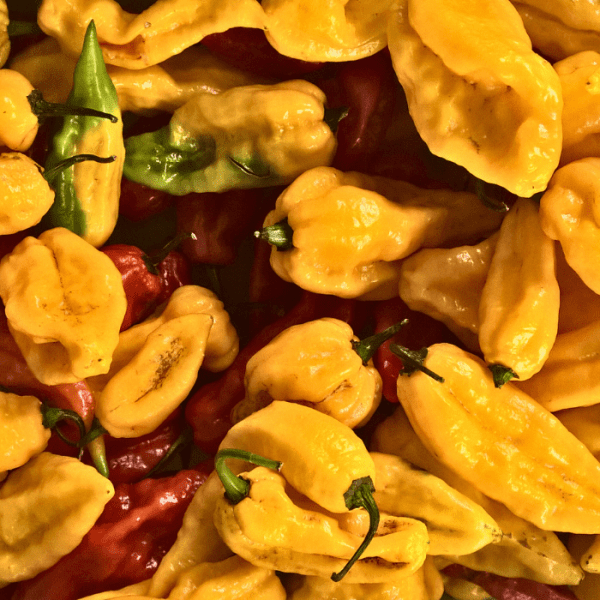Position
Paper Lantern peppers thrive in warm conditions. They grow best in temperatures between 21°C and 29°C.
They are sensitive to frost, so make sure to plant them after the last frost in your area, and harvest before the first frost.
Paper Lantern peppers need full sun to thrive. Aim for at least 6–8 hours of direct sunlight per day.
If you live in a cooler climate, you can grow (or move in winter) Paper Lantern peppers in containers indoors near a sunny window or under grow lights.
While Paper Lantern peppers do well in warm weather, be cautious of extreme heat, which could stress the plants and reduce fruit production.
Soil
They prefer well-draining, loamy soil with a pH between 6.0 and 7.0.
Before planting, amend the soil with compost or organic matter to improve fertility and drainage.
Adding half a bag of our Volcanic Rock Dust (R25 per bag) and a bag of Superfrass (R25 per bag) will assist in rapid growth.
Watering
Keep the soil consistently moist but not waterlogged. Water the plants deeply, especially during dry spells.
Mulch
Use from 2 to 5 centimetres of pine bark mulch to protect the roots from UV damage and drying out. It retains moisture and maintains an optimal pH. Do not let the mulch touch the plant stem, as it may cause infection or rot.
Re-apply every 3-4 months.
Pruning
Prune the plants by removing any dead or damaged leaves. You can also pinch back the growing tips to encourage branching and more fruit production.
Paper Lantern peppers can grow tall, so staking or using cages may be necessary to support the plants and keep them upright as they produce peppers.
Fertilising
Use a balanced fertiliser (such as 10-10-10) during planting and again every 4-6 weeks throughout the growing season to encourage healthy growth.
Too much nitrogen can lead to excessive foliage growth with little fruit production.
Apply 1 teaspoon every 4-5 months of our slow-release all-plant fertiliser. The roots will absorb what they need.
Pests & Diseases
Watch for pests like aphids, spider mites, and whiteflies.
Prevent fungal diseases like blight by providing good airflow and avoiding overhead watering. Crop rotation helps avoid soil-borne diseases.
Treat promptly or preferably use preventative measures by spraying with agricultural Neem Oil or Effective Microorganisms (EM Control)
Harvesting
Paper Lantern peppers typically take around 90-120 days from transplanting to reach maturity, depending on the growing conditions.
These peppers mature from green to red. Harvest them when fully coloured and firm.
Use scissors or pruning shears to cut the peppers from the plant, being careful not to damage the plant.





